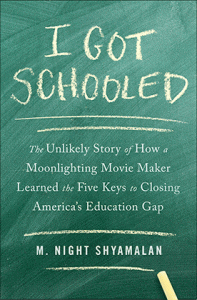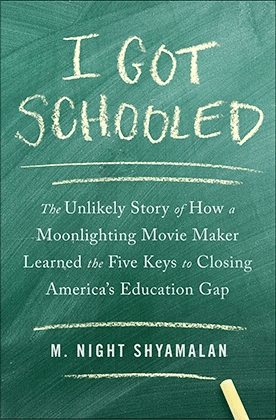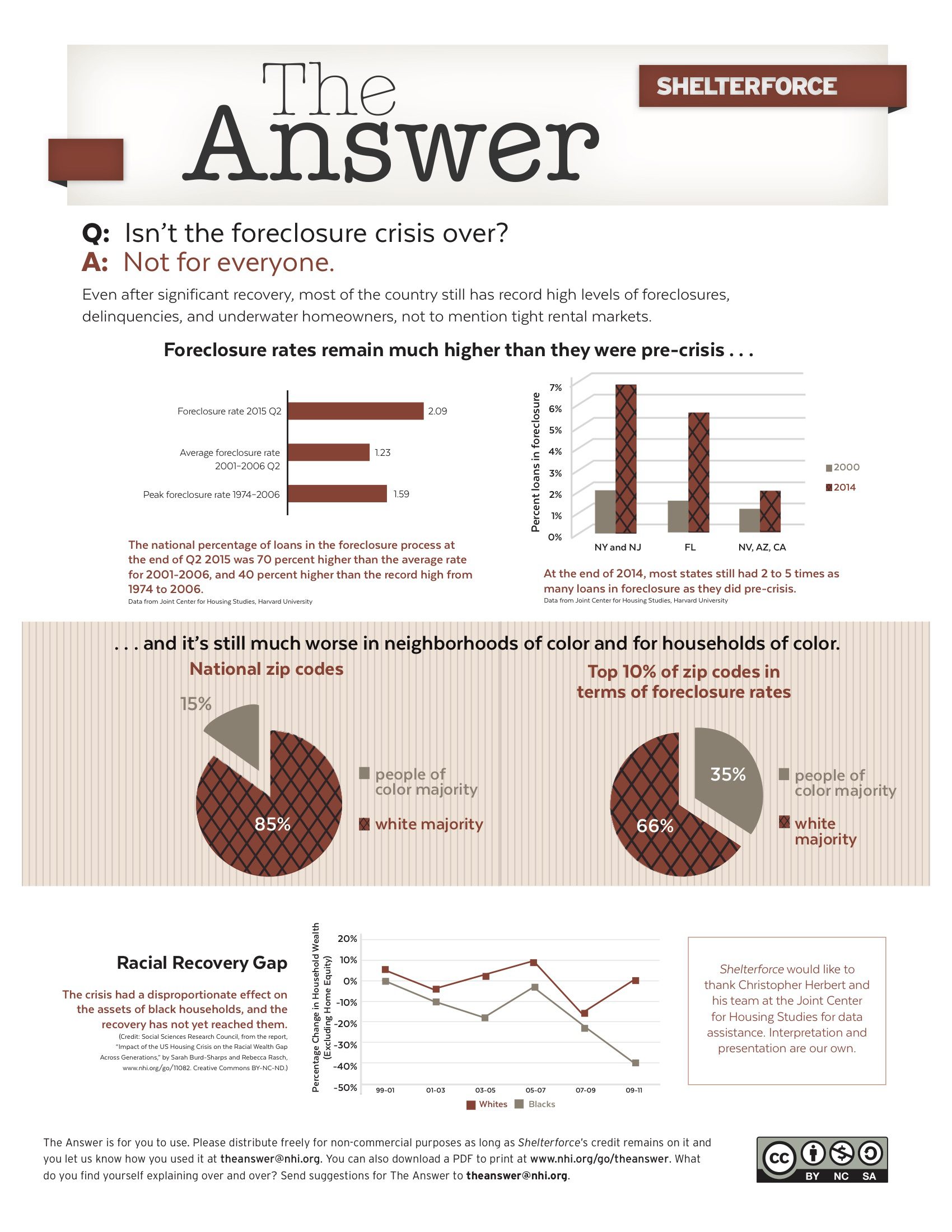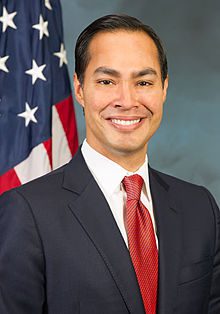
From Part I, let’s start with the good stuff. Shyamalan opens Chapter 1 with a tale of two schools he visited while scouting for film locations in central Philadelphia. The “cavernous gap” he saw in resources, student engagement, and overall educational experience inspired Shyamalan’s work in education. He uses these schools to make a crucial point: the existence of each as a “good” or “bad” school depends on the other’s opposite status, and school quality cannot be a zero-sum game. Every child must attend a strong school.
He also refutes what is perhaps the most common-sense truism in the public conversation on education: that U.S. schools are failing. Shyamalan points out that the test scores most often misused to prove this, those from the Programme for International Student Assessment, would place the United States far above every other nation if students of similar socioeconomic status were compared. The U.S. doesn’t have an education problem; we have a child poverty problem.
These sections of Part I inspired me to cheer, but other sections led to some cringing. Foremost among these were the places where Shyamalan makes the all-too-common errors of conflating school success with higher test scores and schools’ purpose with workforce preparation. Most educators have many more important goals for students than the kinds of discrete knowledge that can be measured by standardized tests, and, as a parent, I am truly grateful for this. I hope that all my daughter’s teachers will prioritize her confidence and joy in learning over her percentile ranking.
Difficult as it may be to imagine, preparation for the world of work was until recently only one of many ways Americans conceptualized the role of schools in society. For Shyamalan, an artist who in Chapter 4 attributes his success above other screenwriters to being “more me than they are them,” to unquestioningly accept “workforce preparation” as the purpose of schooling shows how powerfully this perspective has come to dominate the conversation.
The other place that made me cringe may well be the most problematic, as it influences everything that follows. Shyamalan explains that he consulted “super-established” people in education, and then goes on to describe meetings with Teach For America founder Wendy Kopp, former D.C. schools chancellor Michelle Rhee, and the president of the National Council for Teacher Quality. These individuals are all part of the same establishment pushing to commodify education.
The heart of the book is the five keys mentioned in the title, which, Shyamalan explains, must all be in place in order for a school to get the maximum benefit of any one. The most troubling is the first one, which he terms “No Roadblock Teachers.” Chapter 4, on this key, endorses what may be the single most destructive education “reform” of recent years: the use of value-added measures (VAMs) in teacher evaluation. These are statistical formulas designed to extrapolate a teacher’s influence from all the other factors that affect a student’s academic growth as measured by standardized tests. Even if test scores did accurately and comprehensively reflect students’ learning, VAMs are too statistically unreliable to be used in this way. Shyamalan reports on these incredibly high error rates (26 percent with three years’ data, going down to 13 percent with 10), but deems them acceptable even if “you don’t want to lose good teachers any more than you want to keep bad ones.” The regular and random turnover in the teaching profession that value-added measures will entail is indefensible in its harmful impact on schools and students and economic cost.
The second key, “The Right Balance of Leadership,” is addressed in Chapter 5. Here the arguments are more mixed, generally going in the right direction but then continuing straight off a cliff. Shyamalan discusses the importance of the principal as an instructional leader, and describes successful school governance models in which principals can spend most of their time in this role, with others taking responsibility for site management, budgeting, etc. Many school leaders would love to be able to devote more time to supporting the work of their teachers in the classroom. However, in the profiled examples, this “support” can look more like micromanagement. Shyamalan praises the “consistency” he observes, but the resulting “instruction” is reminiscent of the dining experience in a national chain restaurant. He even lauds a “list of specific techniques for injecting joy into the classroom: giving students nicknames, for example.” I hope my daughter’s joy in the classroom isn’t reduced to a list of techniques—and I suspect Shyamalan wishes the same for his own daughters.
The third key is “Feedback,” the subject of Chapter 6. Here again there are some excellent suggestions, as well as some serious limitations. The title of the chapter is “You Had Me at ‘Data,’” and the focus of the discussion is overwhelmingly on quantitative data, like test scores. However, feedback can, and should, be much more broadly conceived. Data, in fact, should be much more broadly understood. While limited to numerical information in everyday usage, Merriam-Webster affirms that anything “used as a basis for reasoning or inference” is data. Test scores should indeed inform instruction—as one of a variety of forms of feedback on student learning. Another important recommendation Shyamalan makes is that all educators become adept at interpreting and using data. I have long advocated that an assessment course be part of every teacher’s pre-professional program, so that data of all kinds can be used to improve educational outcomes at the classroom level.
The fourth key, “Smaller Schools,” is my personal favorite, even though Chapter 7 emphasizes the wrong reasons for their importance. Shyamalan suggests that schools of 600 students or under are successful because the principal has fewer classrooms and teachers to oversee—presumably to ensure the problematic consistency illustrated in Chapter 5. However, the decades-long small schools movement promotes them as a means of building stronger school communities, with closer personal connections between teachers and pupils, and among the students themselves. Shyamalan cites a study on the number of people it is possible to have meaningful social relationships with—which happens to be 150, or the number per grade-level cohort in a 600-student high school—so perhaps this is a more significant factor for him than the early part of the chapter lets on.
The fifth key is “More Time in School.” The discussion in Chapter 8 presents important challenges and makes useful suggestions for addressing them, but misses the bigger picture—the issue behind the problems. Shyamalan describes the discrepancy in educational achievement among students of different social classes, which is a real concern despite some of the flawed studies he draws on. He discusses the phenomenon of summer learning loss among poorer students, which is exacerbated by summer learning gain among their wealthier counterparts. This is destructive both to poor students and to their teachers, who are held responsible for the difference in test scores between a child who summered traveling abroad or spending every day in enrichment classes, and a child who spent the summer at an understaffed, low-quality daycare facility. He recommends universal access to preschool, and an extended school day and year. These are both good suggestions. But one of the most important reasons that poor students are less successful in school than wealthy ones is that our schools and curricula reflect the kind of knowledge, skills, and dispositions that are found in some homes and not in others. Children both rich and poor are learning from the day they’re born, but the community languages and experiences of poor kids are not acknowledged or valued in the classroom.
The book overall is conversational in tone and engagingly written, and Shyamalan is endearingly self-deprecating as he lays out his comprehensive plan for transforming U.S. schools and equalizing educational achievement. I enjoyed reading it, and found it provided a valuable lay perspective on some of the components of a re-envisioned approach to schooling and school policy. I Got Schooled is good, guilt-free vacation reading: both fun and informative. However, I would caution anyone downloading it to their Kindle while packing a weekend bag to keep in mind the bigger picture. America’s education gap will not be closed until inequities are addressed in other, more fundamental areas—for instance, housing. The five keys won’t open any doors for children who don’t have homes to enter.
[Editor’s note: Shyamalan keynoted the 2014 Federal Reserve Reinventing Older Communities: Bridging Growth & Opportunity, and sold many books there. This relatively high-profile platform within the field for this book is one of the reasons we sought out a review of this book specifically out of the myriad books on education reform.]






Comments